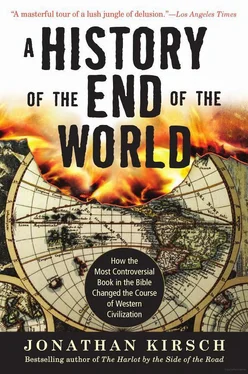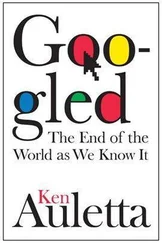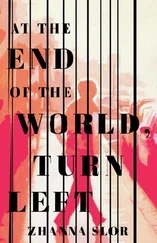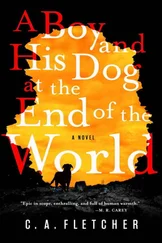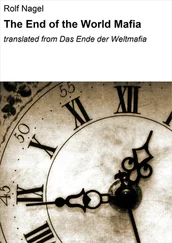So it was that a sermonizer might seek to set his audience afire with terrors and yearnings and end up in the flames of his own making. Such was the fate of a man who has been called “a martyr of prophecy,” Girolamo Savonarola (1452–1498), perhaps the single most famous (or notorious) of the apocalyptic radicals. 98Florence was destined to be the New Jerusalem, or so Savonarola believed and preached, and he saw it as his divine mission to make it so. At a moment in history when Europe was afflicted by “presages, phantoms and astrological conjunctions of dreadful import,” as one contemporary chronicler put it, the Florentines were a ready and willing audience. 99
Like the author of Revelation, Savonarola was a self-appointed soldier in a culture war. The Dominican friar detested what he called “the perversities and the extreme evil of these blind peoples amongst whom virtue is reduced to zero and vice triumphs on every hand” 100—that is, the worldly ways of life and art that are seen today as the glory of the Renaissance. And, just as John denounced the pleasures and treasures of Roman paganism (“Cargo of gold, silver, jewels and pearls, fine linen, purple, silk and scarlet…”), 101Savanarola condemned the opulent lives of the Roman Catholic clergy.
“You have been to Rome,” he declared. “Well, then, you must know something of the lives of these priests. They have courtesans, squires, horses, dogs. Their houses are filled with carpets, silks, perfumes, servants. Their pride fills the world. Their avarice matches their pride. All they do, they do for money.” 102
Savonarola, again like the author of Revelation, was a gifted and powerful preacher, and his sermons “ignited a fireball of religious panic that heated even the city’s most urbane minds,” according to cultural historian Robin Barnes. 103His public lectures on the book of Revelation were so popular, in fact, that he was forced to move to ever-larger quarters in order to accommodate the crowds. They took to heart his warning that the end of the world was near: “torrents of blood,” “a terrible famine,” and “a fierce pestilence” awaited the sinners. 104And they surely thrilled at the sight of a seer in action: “My reasons for announcing these scourges and calamities are founded on the Word of God,” ranted Savonarola in one of his white-hot sermons. “I have seen a sign in the heavens. Not a cross this time, but a sword. It’s the Lord’s terrible swift sword which will strike the earth!” 105
Above all, Savonarola commanded his congregation to forgo the pleasures of the flesh in anticipation of the Day of Judgment. “Sodomy is Florence’s besetting sin,” declared Savonarola, who complained that “a young boy cannot walk in the streets without of falling into evil hands.” 106But he was no less punishing when it came to the sexual excesses of women, real or imagined. “Big flabby hunks of fat you are with your dyed hair, your high-rouged cheeks and eyelids smeared with charcoal,” he railed. “Your perfumes poison the air of our streets and parks. Not content with being the concubines of laymen and debauching young boys, you are running after priests and monks in order to catch them in your nets and involve them in your filthy intrigues.” 107And he laid the same charge against the pope and the clergy: “Come here, you blasphemy of a church!” he sermonized, making good use of the catchphrases of Revelation. “Your lust has made of you a brazenfaced whore. Worse than beasts are you, who have made yourself into an unspeakable monster!” 108
The most remarkable and enduring moment in Savonarola’s war on the humanism and high art of the Renaissance was the so-called Bonfire of the Vanities, a pyre on which he urged the penitent men and women of Florence to toss their finery and frippery, wigs and gowns, perfumes and face powders, mirrors and rouge pots, dice and playing cards, and “certain musical instruments whose tone was deemed to be of an excitant nature.” 109Some of the fuel for the bonfire can be described as pornography or worse—“marble statues of lewd posture, mechanized dolls of impure gesturing, as well as all articles apt or calculated to excite lust” 110—but paintings by Botticelli and books by Petrarch and Boccaccio were also pitched into the flames. 111The reward for the self-sacrifice of the Florentines, he promised, would be the elevation of the city of Florence to the stature of the New Jerusalem, a model of Christian purity and the capital of the millennial kingdom.
Like so many other apocalyptic preachers, Savonarola saw no meaningful distinction between religion and politics. Indeed, his vision of the end-times was deeply rooted in the soil of realpolitik. Thus, for example, he condemned the papacy in Rome on moral grounds: “They have turned their churches into stalls for prostitutes,” he declared, “I shall turn them into stalls for hogs and horses because these would be less offensive to God.” 112And his moral revulsion prompted him to side with the French king, Charles VIII, who was contesting with the pope for political sovereignty over Italy. Nor was Savonarola troubled by the bloodshed and chaos that he invited and even instigated. When Pope Alexander reportedly tried to make a separate peace with Savonarola by offering to raise him to the rank of cardinal, whose badge of office was a scarlet miter, the pope badly misjudged the temper of the true believer.
“I want nothing but what you, O Lord, have given to your saints, namely death,” Savonarola retorted. “A red hat, yes, but red with blood—that’s what I wish for.” 113
Savonarola may have won over the guilt-ridden and panic-stricken souls who rallied to his potent sermons, but he also managed to alienate those among the wealthy and powerful of Florence who sided with the pope and who, not incidentally, were offended and embarrassed by Savonarola’s denunciation of their riches and privileges. “Fra Girolamo either sees spooks,” cracked one of his adversaries, referring to him by his title and first name, “or he drinks too much.” 114Savonarola’s enemies in Florence, acting in concert with the pope in Rome, arranged for his arrest, torture, and trial, and he was condemned on charges of heresy and schism.
“I separate you from the Church Militant and Triumphant,” said the bishop who conducted the formal ritual of excommunication. “From the Church Militant, not from the Church Triumphant,” retorted the defiant Savonarola. “That is not within your competence.” 115
The “proto-messianic republic” that Savonarola founded in Florence lasted only three years. 116On May 24, 1498, Savonarola was stripped of his monk’s robe, his head was shaved to destroy his tonsure, and he was hanged by the neck from a gibbet. Then his broken body was put to the flames in the same crowded and clamorous public square where he had once kindled his own dangerous fires.
“Prophet,” taunted an ironist in the noisy mob, “now is the time for a miracle!” 117
Still, the apocalyptic idea is not always or only a matter of gloom and doom. For readers who are so inclined, the book of Revelation—and all of the apocalyptic writings in both Judaism and Christian traditions—can be understood as a story with the happiest of endings. To be sure, John warns that our benighted world will end in fire and brimstone, but he also promises a new heaven and a new earth. “Behold,” says God at the end of Revelation, “I make all things new.” 118That is why the apocalyptic tradition has been aptly described as “bipolar”: the bad news is that the earth will be destroyed and humankind will be exterminated, but the good news is that the saints will live forever in paradise. 119
At the very moment when Savonarola’s apocalyptic visions (and Savonarola himself) were going up in flames, for example, another celebrated reader of Revelation was looking forward to a much happier fate for himself and all of humankind. Of course, Christopher Columbus (1451–1506) is remembered for his historic voyages of discovery rather than for his apocalyptic speculation. Long before Columbus embarked on the first of his momentous voyages, however, the Admiral of the Ocean Seas had already found his way to the ancient mystical texts, all of which he read with the greatest curiosity and credulity. Between his second and third sailings to America, Columbus compiled his own collection of apocalyptic and prophetic passages that he had extracted from the Bible, the writings of the church fathers, and various medieval commentaries, a work that he titled The Book of Prophecies.
Читать дальше
